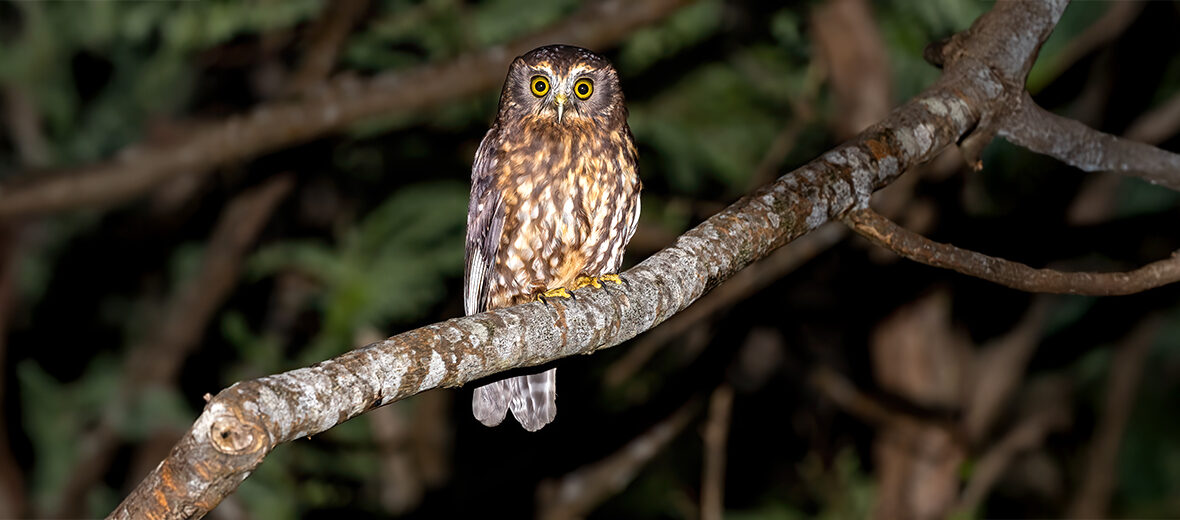
The morepork owl, aka morpork, mopoke, or ruru, hails from New Zealand and Norfolk Island. 3 subspecies are recognized, 1 extinct, 1 a hybrid, plus the original species. Seeing as they face no major threats, sans perhaps habitat loss due to deforestation, these owls are listed as Least Concern by the IUCN. Their population trend is also currently listed as Stable.
First the Stats…
Scientific name: Ninox novaeseelandiae
Weight: Up to 6.17 ounces
Length: Up to 11.5 inches
Wingspan: Up to 4.5 feet
Lifespan: Up to 40 years
Now on to the Facts!
1.) These owls were first described by Johann Friedrich Gmelin in 1788.
2.) At 1 time they were thought to be the same species as the Australian boobook, native to Australia, Timor-Leste, and New Guinea, a belief that endured for 211 years, until 1999.
3.) Just like all owls, these owls have superb night vision and amazing hearing, able to locate a small lizard or rodent from many feet away.
4.) They prefer to dwell in forests dominated by hardwood trees, and occupy the forests right up to the tree-line.
5.) While primarily nocturnal (active at night) they can also be crepuscular (active at dawn and dusk).
But wait, there’s more on the morepork owl!
6.) Their primary predators are presumed to be swamp harriers.
7.) Nests are created in the hollows of tall trees.
Did you know…?
Such is the case with most species of owl, the morepork owl is protected under Appendix II of the Convention on International Trade in Endangered Species of Wild Fauna and Flora (CITES).
8.) Females lay up to 3 eggs that hatch in up to 30 days.
9.) Even though their primary hunting technique is the perch-and-pounce method, they are agile birds with a fast, goshawk-like wing action and have the ability to maneuver quickly when pursuing prey or “hawking” for insects. Hawking is also known as catching prey “on the wing”, or in mid-flight.
10.) Beetles, moths, caterpillars, spiders, grasshoppers, and wētās are all on the menu.
Now a Short Morepork Owl Video!
Be sure to share & comment below! Also, check out the Critter Science YouTube channel. Videos added regularly!

Want to suggest a critter for me to write about? Let me know here.
Some source material acquired from: Wikipedia & IUCN
Photo credit: JJ Harrison



